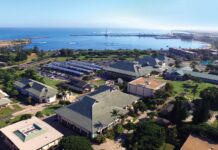Story by Lara McGlashan
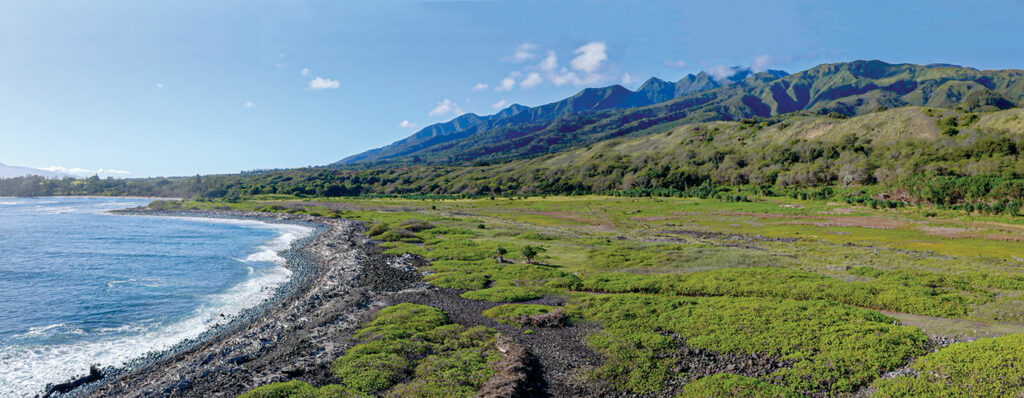
If you were to stand on the north shore of Maui 20,000 years ago where the Waihe‘e Refuge is today, the terrain and wildlife would have appeared decidedly different. Countless species of birds would have wheeled through the skies in search of an unlucky fish for lunch. The ocean would have been much lower, and in fact, according to Scott Fisher, Ph.D., chief conservation officer for the Hawaiian Islands Land Trust, you would have been able to trek on foot from Hāna all the way to the west end of Moloka‘i. Avian nests would have dappled the sand dunes marking the foothills of the West Maui mountain, and in the wetlands below, marsh grasses and palm trees would have rubbed foliage in close company. And beneath it all would have scuttled hundreds of land crabs, foraging, cleaning and devouring everything that came their way — small but integral cogs in the eco-maintenance of the ancient landscape.
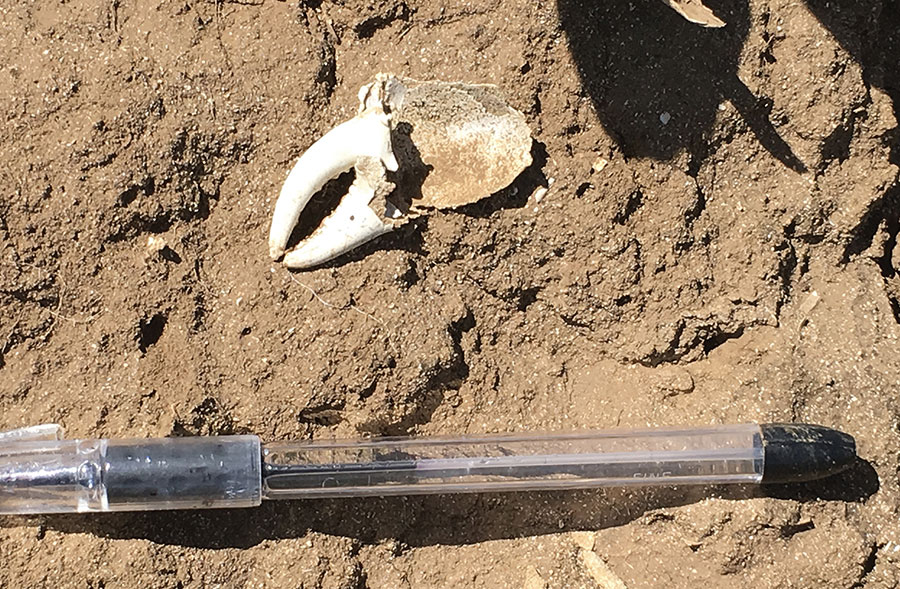
Natural events such as the rising sea, tsunamis, erosion and hurricanes changed the coastline of the Hawaiian Islands over the millennia, but the most impactful natural “disaster” was the arrival of aggressive, invasive species: ‘Iole (Pacific rats), mongooses, cats and centipedes hitched a ride aboard seacraft from all over the world, and the practice of farming brought ungulates such as goats, sheep and pigs to the Islands, who made quick work of plenty of now-defunct plant species. Once these creatures set paw, claw and craw upon land, les jeux sont faits.
It is irrefutably challenging to work backward and determine what flora and fauna used to exist in Waihe‘e — where it set up camp and why, who ate what or whom — and though evidence has been gleaned through environmental records and core sampling, it is largely accented by speculation. However, it is important to determine what used to exist on the shoreline, not only for environmental restoration but also for future land resilience. Because Maui, while not particularly susceptible to hurricanes, is a frequent victim of tsunamis, and in fact, it was one such disastrous event in March 2011that provided the impetus for the latest HILT project: creating a natural “bioshield” of endemic plant species along the coastline to protect the wetlands against disaster and climate change. “That tsunami came from Japan and confirmed for us that native vegetation along the coast is better at holding back wave energy and preventing large-scale erosion,” says Fisher.
Scientists commonly use pollen analysis to paint a detailed picture of the prehuman ecology of an area, but Waihe‘e is not an ideal environment for this practice. “Pollen can survive for tens of thousands of years or longer when covered by sediment; however, drying destroys pollen grains, and the [ancient] wetlands regularly dried out during the hot season,” says Fisher. In addition, most pollen flew inland rather than seaward, and what little did stick around sifted down into the sand (then also dried up) or blew away due to the loose and shifting nature of a beach environment.
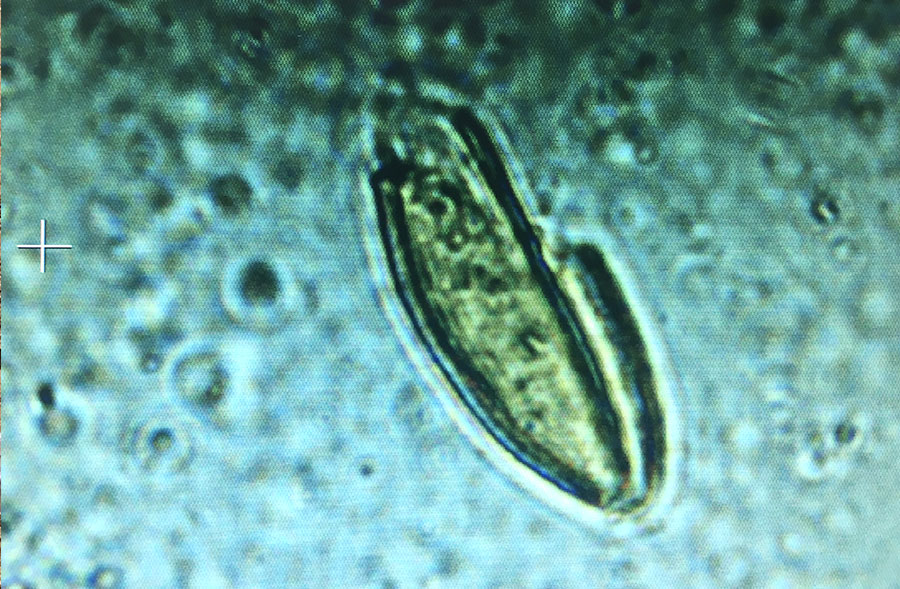
One day Fisher was in the lab looking through some specimens he had collected from the Waihe‘e dunes: the remains of an extinct species of land crab (Geograpsus severnsi). These fossils speckle the hillside, with full and partial dactyls (claws) on full display. “A recent dating from the Waihe‘e Refuge marked intact specimens at 1,800 years old that look like they were buried last month,” says Fisher. As he turned these claws over and over in his hands, the proverbial light bulb went on. With a toothpick, Fisher carefully scraped the dirt out from inside the claws and into a baggie and voil., ancient pollen once again bloomed beneath the lens of a microscope.
“When crabs die, the interior of their shells quickly fills with sediment,” Fisher explains. “The thickest and most durable part of their exoskeleton, the claws, preserve the best, and the sediment inside these carbon containers was protected enough to get some samples. They are like little time capsules of information.”
According to claw-crafted data, the dominant plant species of years gone by was loulu, or Pritcharia palm, and Fisher estimates that this species all but covered the 27 acres of what was once the Kapoho wetlands of Waihe‘e. “It would have felt like walking through a dense coastal forest of loulu fan palms right up to the edge of the wetlands, where it would have abruptly transitioned into a sedge-covered series of spring-fed bogs,” Fisher says. “As for trees, the pollen suggests that the dunes were dominated by ‘ohe makai and kauila (coastal hardwoods) at the lowest part, ‘āweoweo (a shrub similar to quinoa) in the middle regions, and mostly grasses on top.”
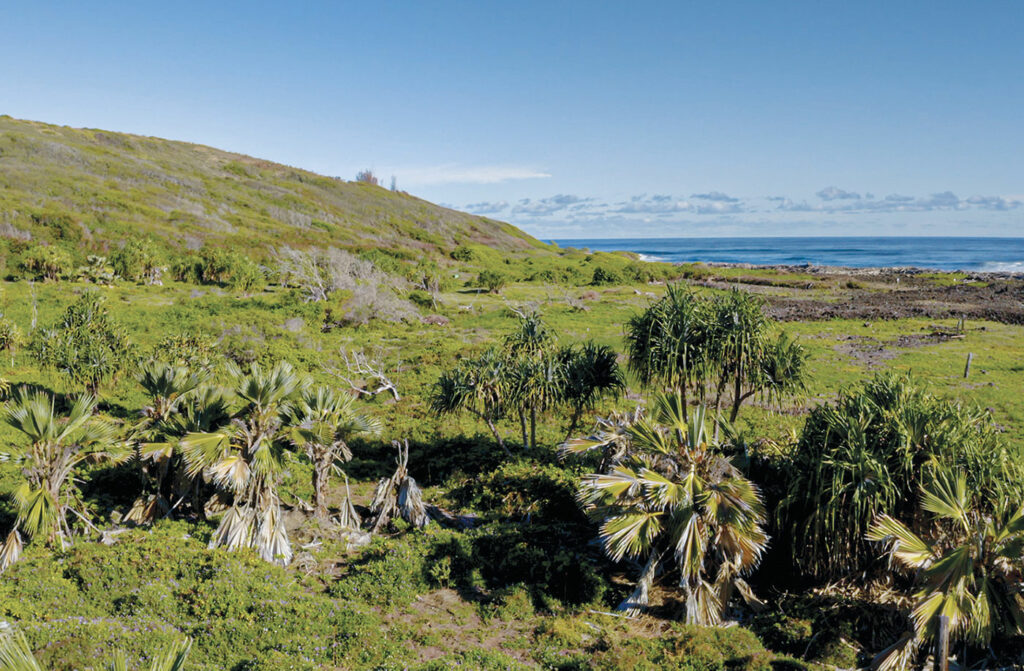
Today, however, there is a paucity of trees altogether, with only a few old-growth specimens to speak of. So what happened, then, to that lush, palm-populated everglade? Fisher believes G. servensi might also hold the key to that mystery.
As determined by its carapace, Geograpsus severnsi was about the size of a human palm and was a ravenous omnivore, consuming everything from dead birds to leaf litter to the random treat washed ashore in a storm. “Crabs are ecosystem engineers,” says Fisher. “Their consumption of detritus, including low-hanging leaves and branches, allowed birds to move about more freely through the foliage, and in turn, the bird droppings added nutrients to an otherwise nutritionally depauperate landscape. Seabirds in particular have an aversion to extremely dense vegetation, and the symbiotic relationship between G. severnsi and the seabirds was crucial: The land crabs consumed the vegetation that obstructed the seabirds’ nesting habitat, while the seabirds fertilized the soil that allowed for new plant growth.”
G. severnsi seems to have gone extinct soon after the arrival of invasive species; these creatures, and to an extent the early settlers, likely found the crabs tasty. Once the crabs disappeared, the vegetation underneath the palms became overgrown. The birds, disenchanted with this tangle, took off for friendlier habitat, and with no droppings to replenish it, the soil once again became nutrient-poor. And in combination with the huge population of introduced rats gnawing them to bits, plants became weak and died. So when the next storm raged through, they uprooted easily and the ocean washed the landscape clean.
“I believe that the loss of this crab may have had a catastrophic, cascading impact on the ecosystem,” says Fisher. “It’s like a tapestry: You pull one thread and it rips all the way across. You never know
which species will cause that one ripple that is so damning for an entire ecosystem.”
In recent years, Fisher and his team have used the pollen samples from the claws to piece together the landscape of the past, and though they can’t resurrect long-gone species, they can cultivate and repopulate some of those endemic plants that were at one time abundant. “We started in the wetlands by restoring vegetation, then broadened out and are beginning to create a bioshield — a forest of native species,” says Fisher. “In planting the most resilient species, we are protecting the wetlands from waves and intense erosion from storms.”
Nowadays, plenty of shrubs and the occasional loulu dot the wetlands, as well as some new “test” plantings along the shoreline which Fisher et al. have been trying to root. A lot of their work is trial and error, because while the claw caches revealed the presence of several species, those only represent a fraction of what was likely in existence thousands of years ago. “It’s like trying to make a cake with some of the ingredients and a few fragments of the recipe,” says Fisher.

Regardless, they are seeing positive results: Five endangered species have returned to the area, including ae‘o (Hawaiian stilt) and the ‘alae ke‘oke‘o (Hawaiian coot). Other frequent visitors include monk seals and nesting green sea turtles. “The Northern pintail, while not endangered, was abundant here in the 1920s and ’30s,” says Fisher. “It had not been seen for more than 70 years, but now we have large visiting flocks.”
How effective will this present-day bioshield prove against the power of the ocean? Only time and plate tectonics will tell. “But by looking to the past we are certainly better prepared to face the future,” says Fisher.
For more about Waihe‘e and the Hawaiian lslands Land Trust, go to hilt.org | IG/FB @HiLandTrust.




